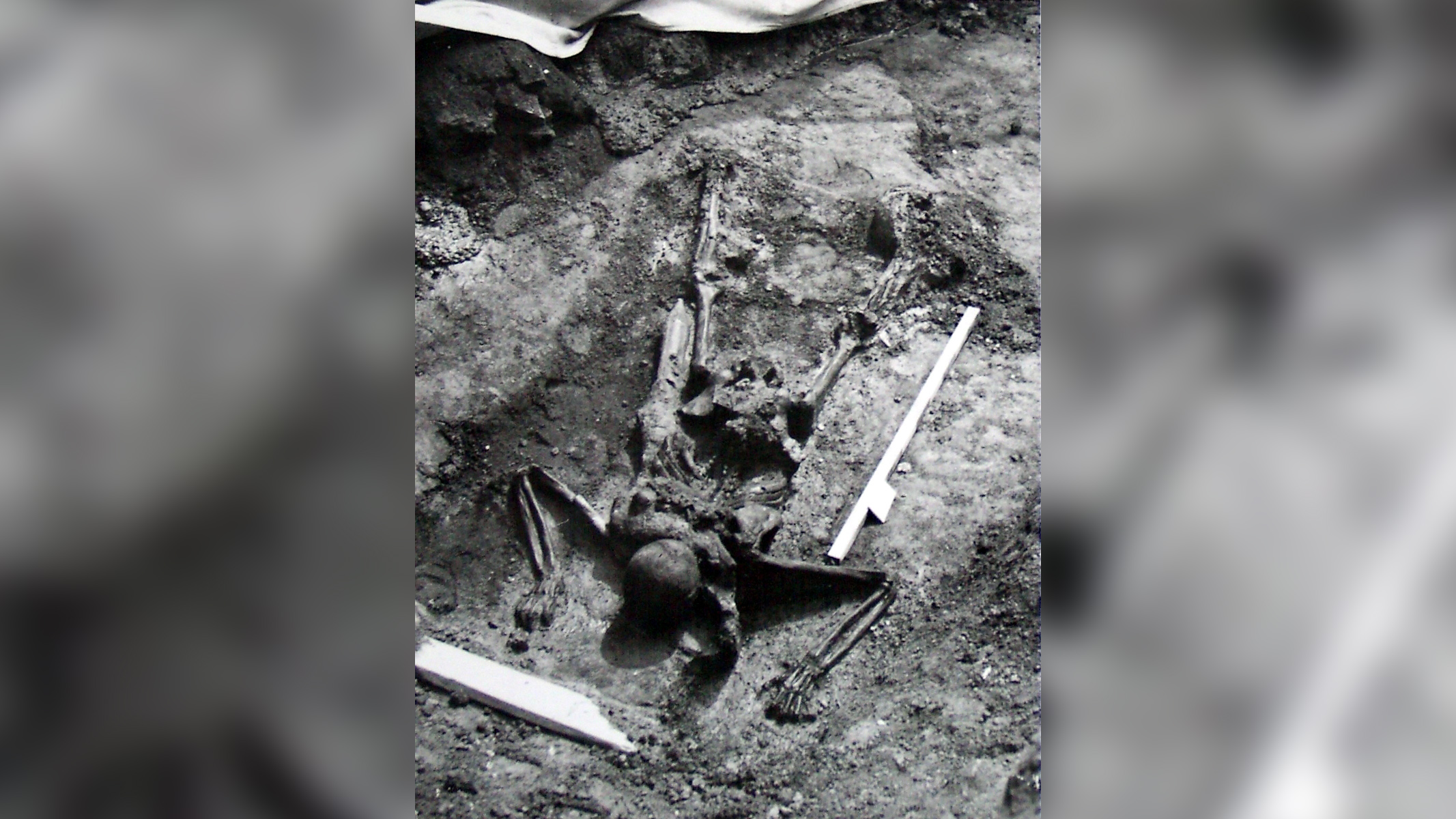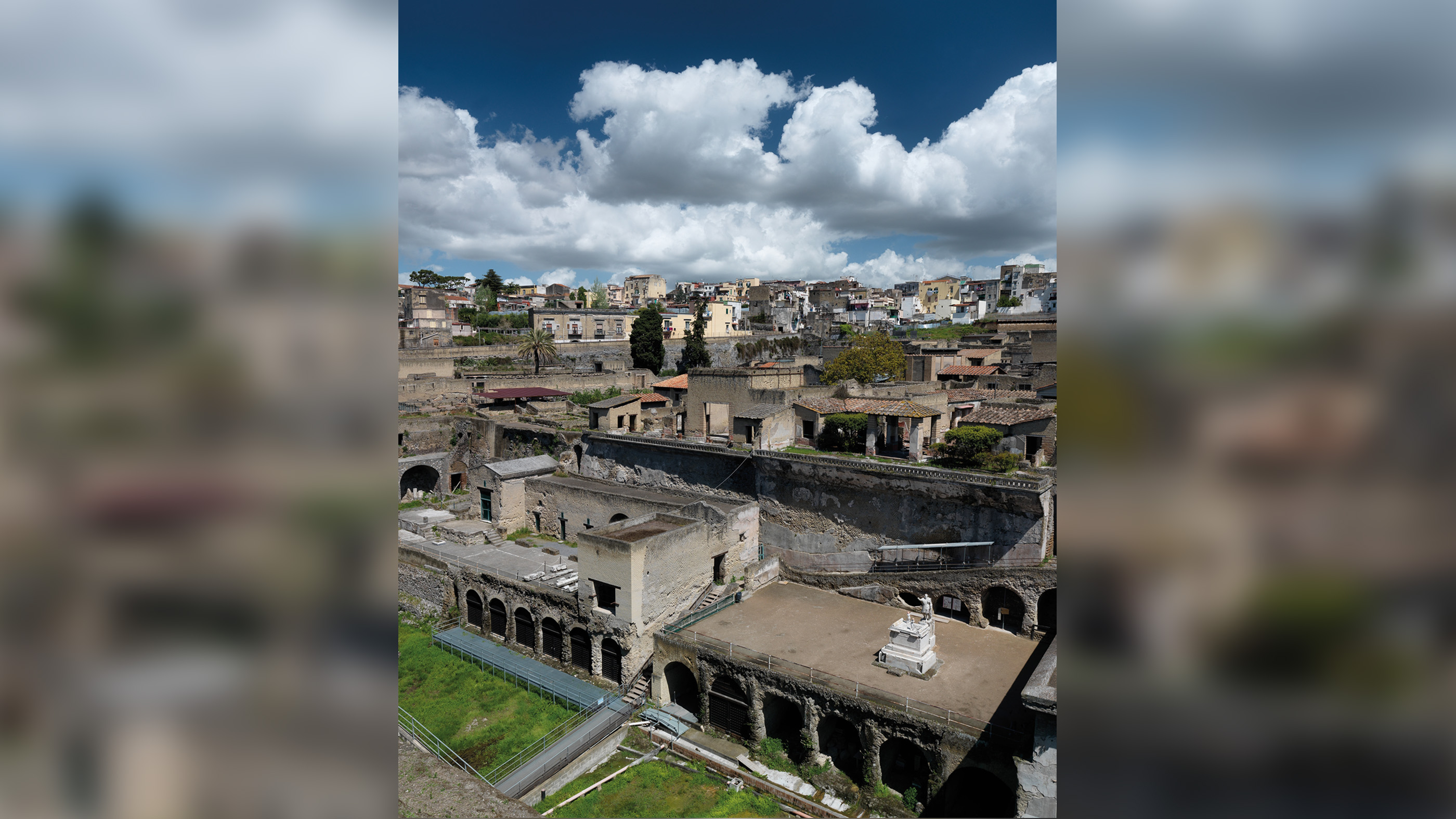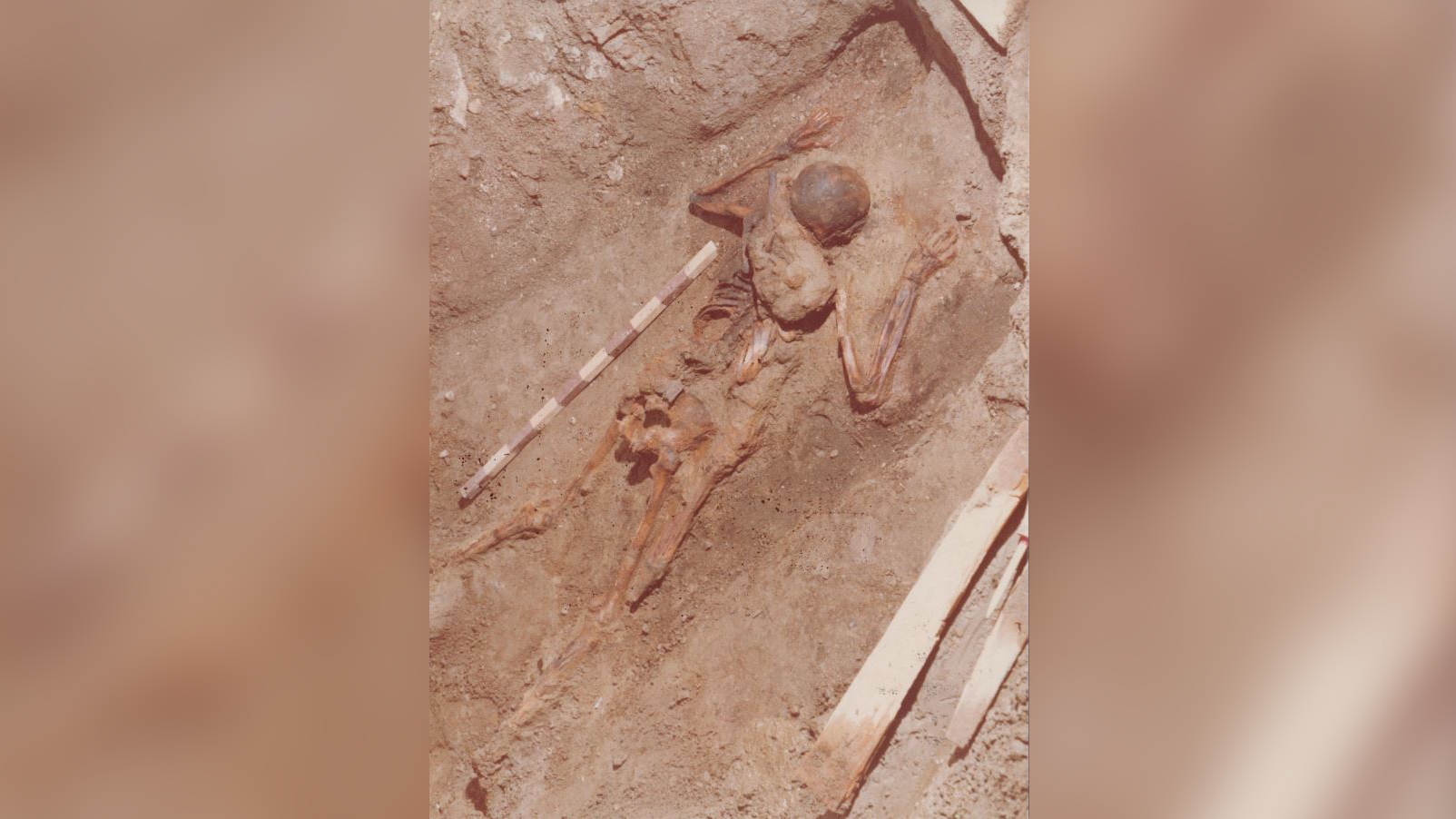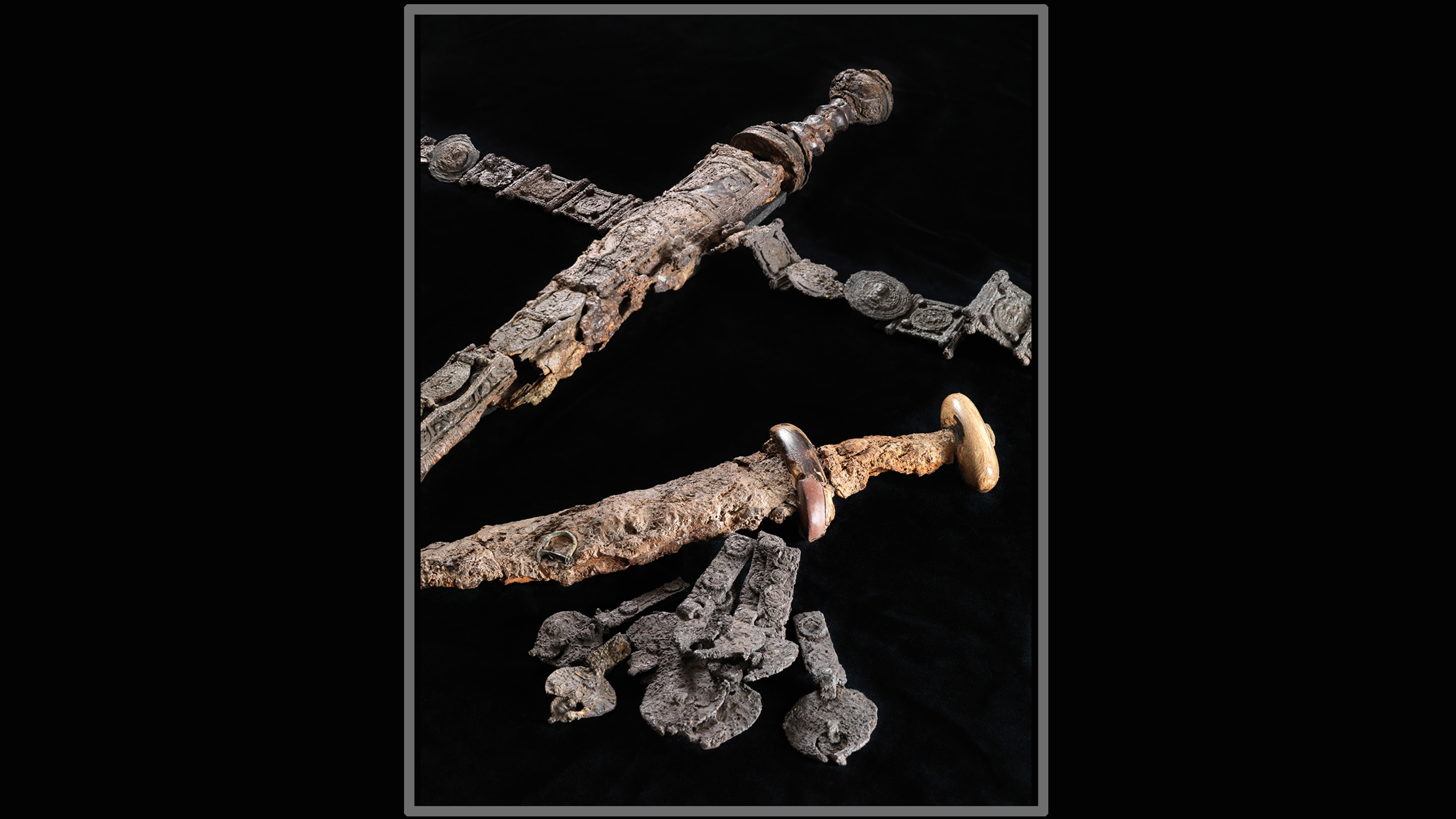Roman-era skeleton found near Mount Vesuvius may be from famous rescue mission

The skeleton of a soldier found on a beach at Herculaneum, an ancient town that was buried when Mount Vesuvius erupted in A.D. 79, may be that of a rescue-party member sent by Roman naturalist and military officer Pliny the Elder to help evacuate people, a researcher has suggested based on a recent analysis.
However, scholars who were not affiliated with the research had mixed reactions, with some supportive of the idea and others very skeptical.
When Mount Vesuvius erupted in A.D. 79, it buried Pompeii, Herculaneum and other nearby settlements, killing thousands of people but preserving many of the bodies. Among the dead was Pliny the Elder (A.D. 23-79), who was leading a naval rescue mission to save people from the destruction.
Related: Preserved Pompeii: Photos of a city covered in ash
Pliny's nephew, Pliny the Younger (A.D. 61-113), wrote a letter to the Roman historian Tacitus (A.D. 56-120) discussing the rescue mission. Copies of that letter survive to the present day and are often used by historians studying the eruption.
Archaeologists discovered the skeleton of the soldier, positioned with its face down, on a beach in Herculaneum in 1982, said Francesco Sirano, an archaeologist at the Archaeological Park of Ercolano in Italy who leads a research team at Herculaneum. Recently, Sirano and his team used X-ray fluorescence spectroscopy (XRF), a technique that can determine the chemical composition of an object, to examine the remains of the soldier's armor.
The tests showed that part of the soldier's armor was decorated with precious metals such as silver and gold. That finding suggests he was of a high rank, which is unusual because historical records don't indicate that Herculaneum had a large military force, Sirano told Live Science in an email written in Italian.
Get the world’s most fascinating discoveries delivered straight to your inbox.
Sirano also re-examined the artifacts originally found with the soldier and found that he was carrying a bag of carpentry tools, which would have been used frequently on a Roman ship. The man was also found with 12 denarii, or silver coins, and two gold coins — an amount that would have equated to a month's salary for a member of the Praetorian Guard, a special unit whose tasks included guarding Rome and the emperor, Sirano said. The fact that he had elaborate armor and an amount of money equal to a month's worth of Praetorian Guard pay suggests that the soldier may have been a member of the unit but researchers cannot be certain.
The skeleton was located near the remains of a boat that may have been used by the Roman military. In addition, the skeleton, and others found near it, were positioned in such a way that the people seem to have died while heading toward the town rather than fleeing it. Given these findings, Sirano believes the man was likely part of the rescue force, possibly a senior officer.
Scholars react
Live Science talked with 10 scholars who were not associated with Sirano's research, to get their thoughts on Sirano's conclusions.Several scholars noted a logistical issue with the scenario Sirano set up. According to the letter written by Pliny the Younger, the naval force led by Pliny the Elder was forced to land at Stabiae, a town located about 14 miles (22 kilometers) from Herculaneum.
Related: Photos: The bones of Mount Vesuvius
That is a 4- to 5-hour walk — "in full armor and in the densely dark conditions that Pliny [the Younger] describes," said Roy Gibson, a professor of classics and ancient history at Durham University in England who has written extensively about Pliny the Younger. As for whether the skeleton found at Herculaneum was that of a member of Pliny the Elder's rescue force, it's "possible, but very unlikely," Gibson said.
In fact, the volcanic ash may have buried Herculaneum before Pliny the Elder's rescue force even managed to land at Stabiae, said Pedar Foss, a professor of classical studies at DePauw University in Indiana who is writing a book on the famous eruption of Mount Vesuvius. The wording of Pliny the Younger's letter, Foss said, suggests that Herculaneum was buried as Pliny the Elder was sailing by it. "The soldier would not have arrived in time to be on the beach, unless Elder Pliny sent an earlier detachment in that direction," Foss said.
However, some scholars did agree with Sirano's interpretation of the skeleton remains, saying the soldier could have been part of Pliny the Elder's rescue force. Andrew Wallace-Hadrill, a classics professor at the University of Cambridge who has conducted extensive research and conservation at Herculaneum, said there is a "very strong" chance that the soldier is from Pliny the Elder's rescue fleet. The soldier "was no ordinary squaddy and probably a member of the Praetorian Guard," Wallace-Hadrill said. Pliny the Elder's fleet was the largest group of ships in the Mediterranean, and Pliny as commander would "have had such a guard. So there is a good chance that this is one of his staff, sent to help," Wallace-Hadrill said.
Some scholars said we may never know for certain whether this soldier was a member of that rescue fleet.
"In theory, it is just about possible that someone from his fleet managed to reach Herculaneum despite the pumice. But that's about as far as I feel we can take this story at this point," said Daisy Dunn, an author who has written extensively about the eruption and who holds a doctorate in classics and art history from University College London. "As exciting as the idea of an identification is, it would be very tricky, if not impossible, to say conclusively that a specific skeleton belonged to one of Pliny's men — even if it actually did," Dunn said.
The team will be conducting new excavations on the beach site this year. The skeletons and artifacts are in storage.
Originally published on Live Science.

Owen Jarus is a regular contributor to Live Science who writes about archaeology and humans' past. He has also written for The Independent (UK), The Canadian Press (CP) and The Associated Press (AP), among others. Owen has a bachelor of arts degree from the University of Toronto and a journalism degree from Ryerson University.



